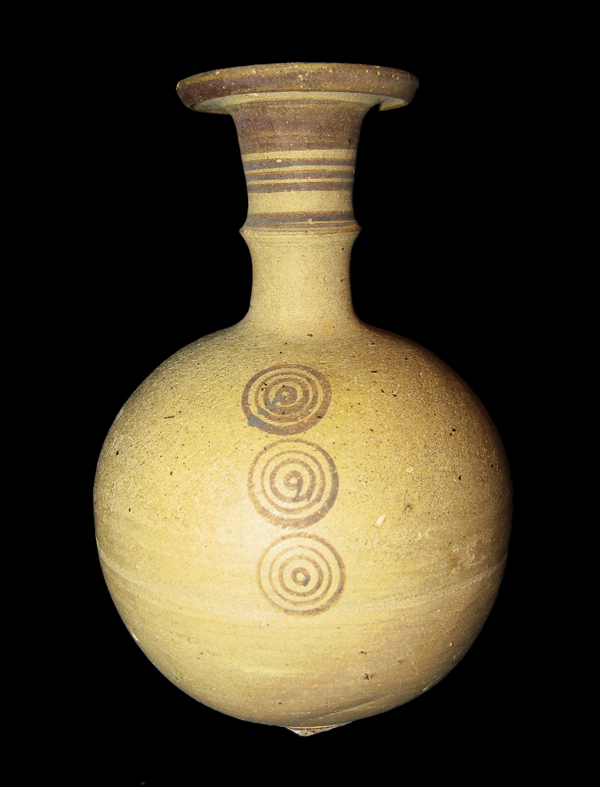Aegean & Mediterranean: Pottery

Clay Lekythos
Cypriot
original
gift of: Professor Thurston Lacalli
date: c. 700-600 BC
provenance: purchased by donor in 1970-72.
description: Small buff-cloured clay lekythos with simple brown concentric circle design. Height 12 cm, diameter 8.5 cm.
Cyprus can be regarded as a centre in which numerous ancient civilisations have crossed paths, bringing into Cypriot art a number of artistic influences. Before the Greeks became known as experts in pottery decoration, Cyprus was in advance of the rest of the ancient world in this craft. Mycenaean influence can be seen in the geometric patterns they used such as the concentric circles found on this example. The use of dull red and black pigments on an unglazed light-colored surface are typical of the style derived from the heritage of the Bronze Age.
The lekythos is one of several kinds of vases used for holding oil, characteristics being the narrow neck and small mouth, adapted for pouring the liquid drop by drop. Lekythoi seldom attained any great size, except in the examples used as tombstones. They were more commonly used at the bath and in the gymnasium and may also have been used for storing pigments or serving olive oil. (See also: Terracotta Lekythos; Maiden/Muse Lekythos.)